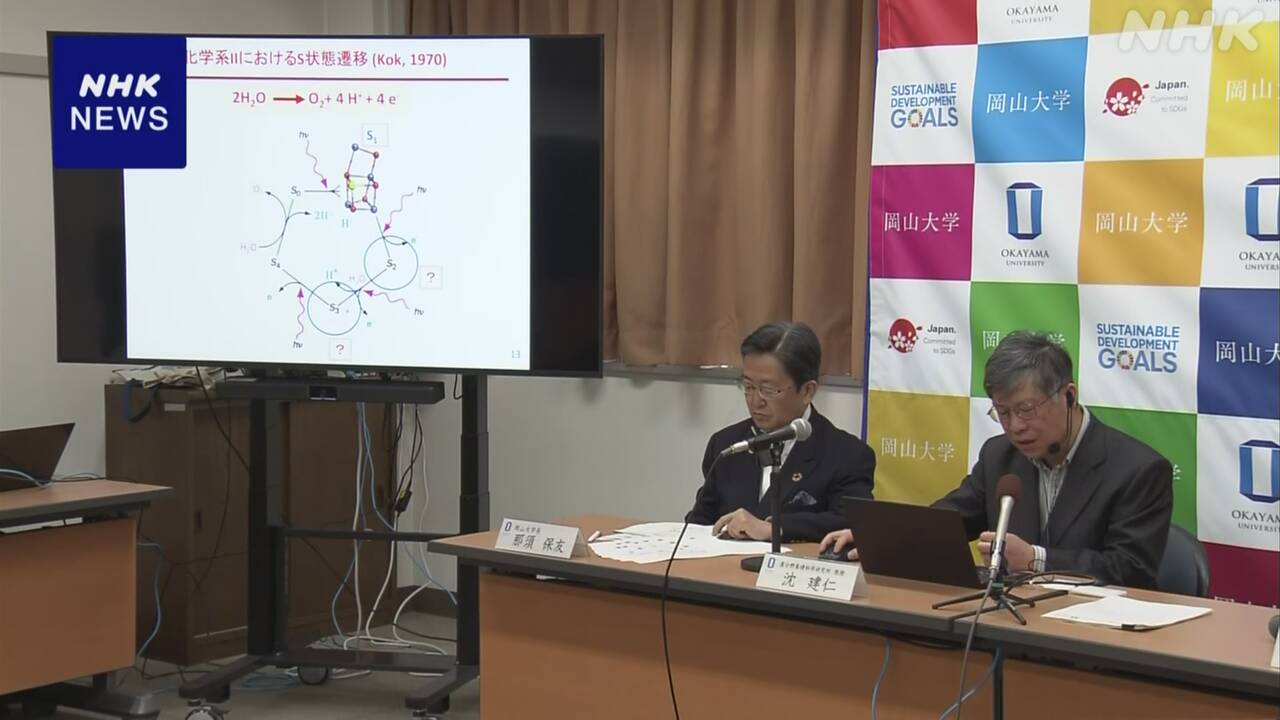A research group at Okayama University has announced that they have succeeded in using special X-rays to capture part of the process in which oxygen molecules are created from water molecules during photosynthesis, which is carried out by plants. It is expected that this will lead to the elucidation of the detailed mechanism of photosynthetic reactions, and that it will be applied to research on ``artificial photosynthesis,'' which is attracting attention as a clean energy source.
This was published in the international scientific journal Nature by a research group led by Professor Shen Jianren of Okayama University.
It is known that when the reaction that creates oxygen from water occurs during photosynthesis, a substance in which atoms such as manganese are bonded in a ``warped chair'' shape acts as a catalyst and takes in water. The research group used special X-rays to observe the incorporation of water molecules into this catalyst over an extremely short period of time, from 2/100 millionths of a second to 5/1000ths of a second.
As a result, they succeeded in three-dimensionally capturing how the structure of the catalyst begins to change one millionth of a second after being exposed to light, and gradually incorporates water molecules.
The research and development of ``artificial photosynthesis,'' which uses sunlight to produce hydrogen and oxygen from water and carbon dioxide, is attracting attention around the world as a clean energy source. It is expected that this will contribute to the development of
Professor Shen said, ``This is a research result that took five years to finally reach.From now on, I would like to take the final step and elucidate the mechanism by which oxygen is produced.''

